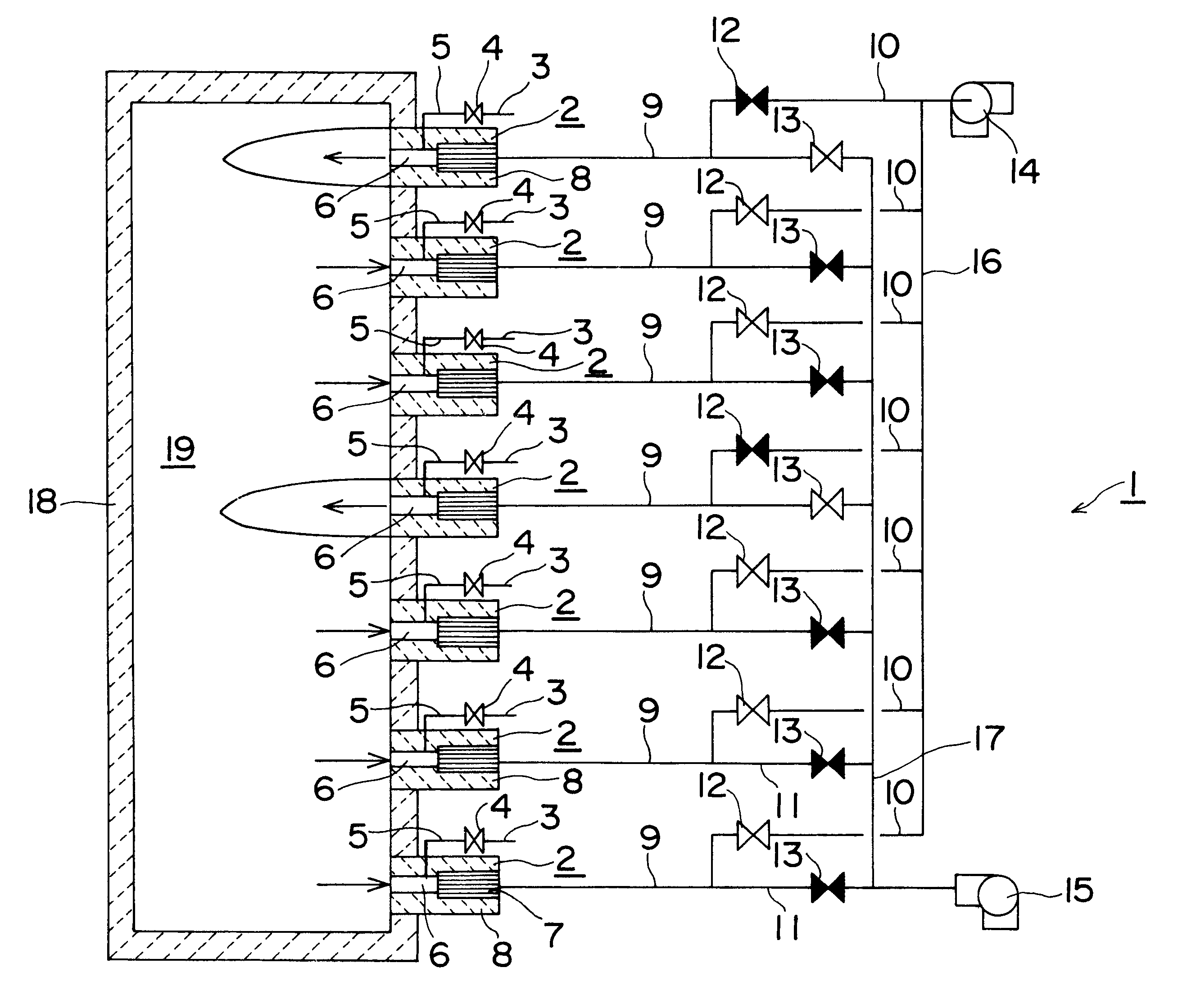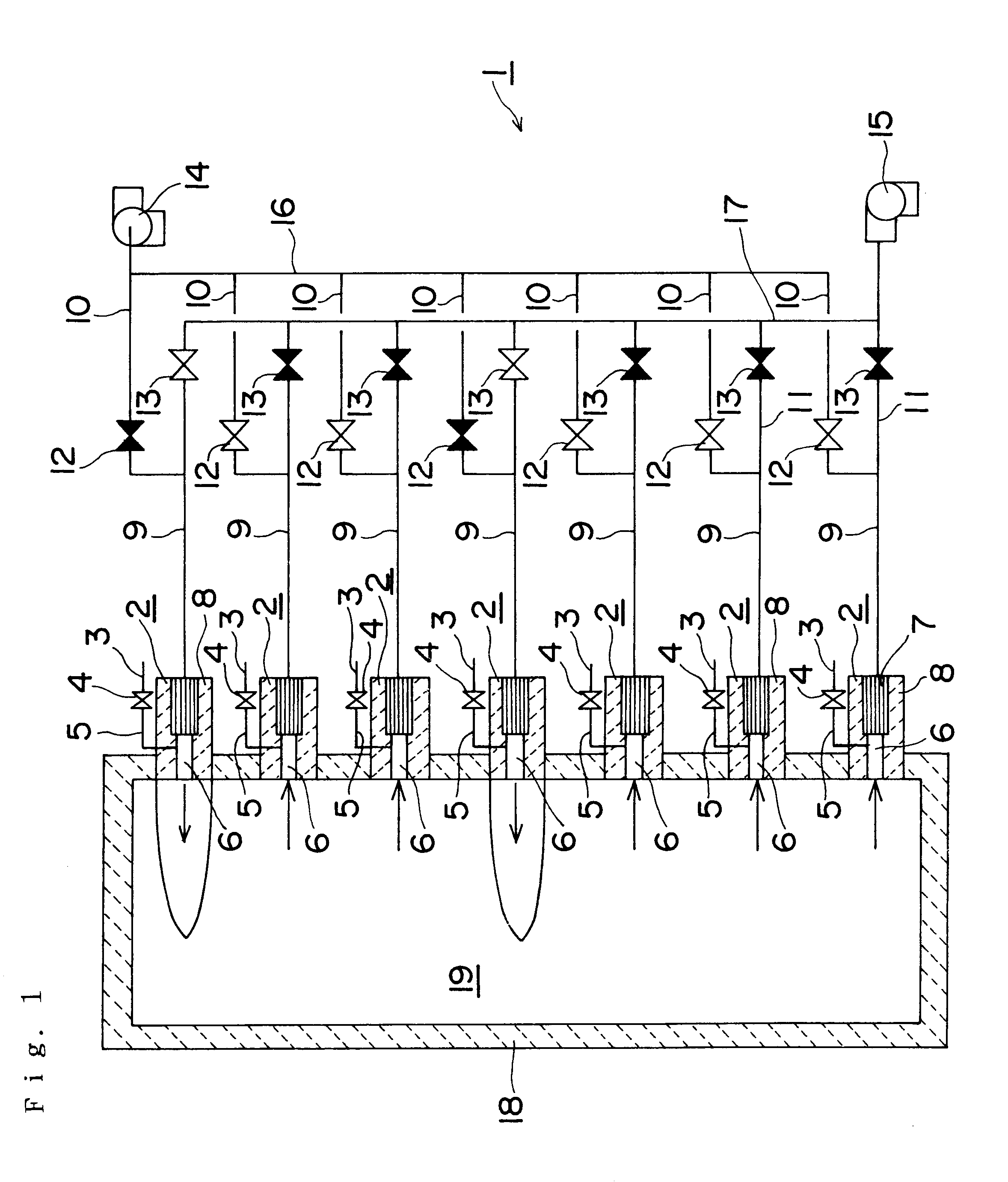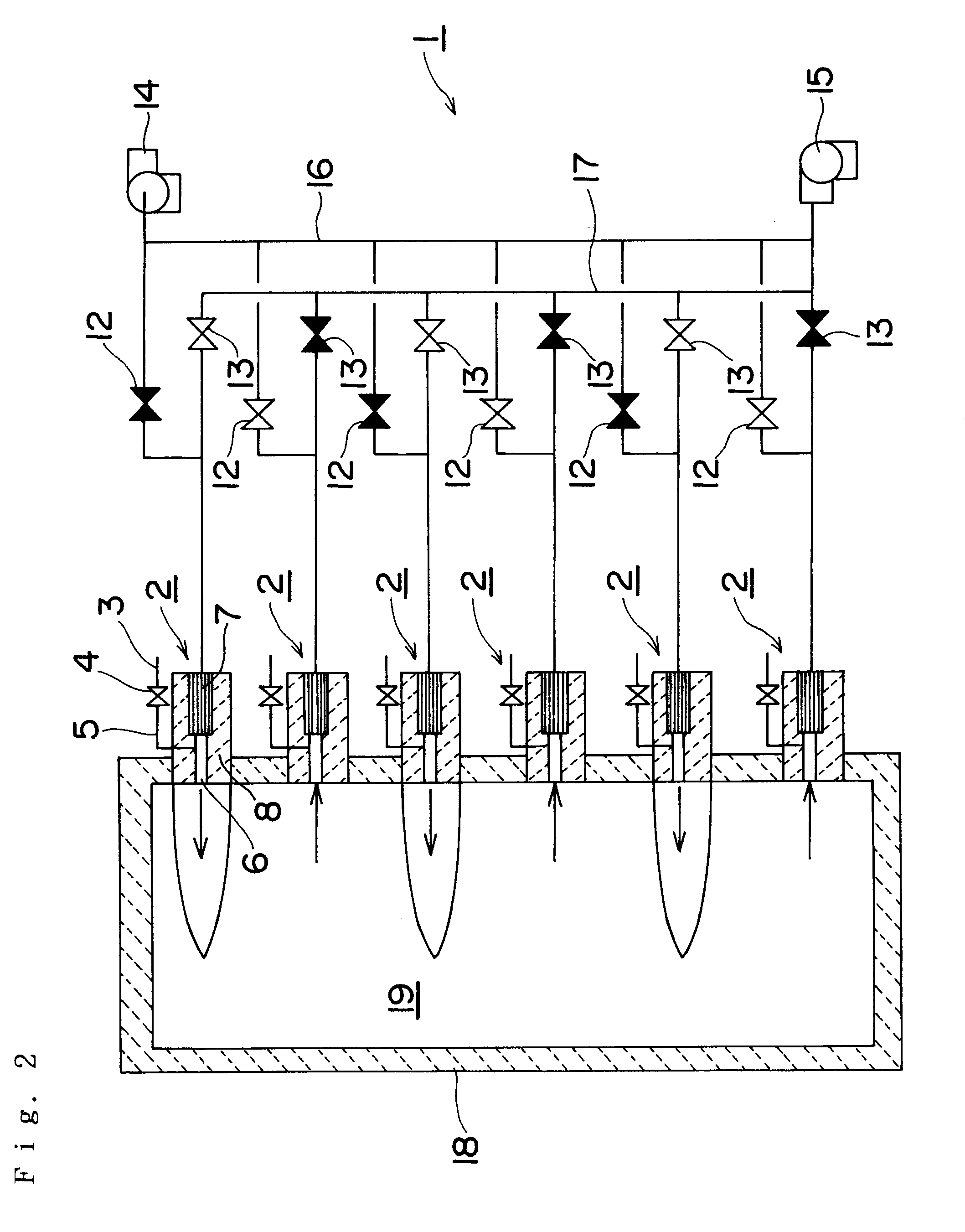Inter-switching heat accumulating regenerative burner system
a regenerative burner and heat accumulating technology, which is applied in the direction of furnaces, combustion types, and combustion using lumps and pulverulent fuels, etc., can solve the problems of insufficient formation, limited non-stationary flame formation, and inability to maintain high air velocity in operation
- Summary
- Abstract
- Description
- Claims
- Application Information
AI Technical Summary
Benefits of technology
Problems solved by technology
Method used
Image
Examples
Embodiment Construction
The structure of the present invention will now be described in detail in connection with the illustrative best modes thereof.
FIG. 1 shows a preferred embodiment of an alternate changeover regenerative burner system (which will be simply referred to as a burner system hereinafter) according to the present invention. With an alternate changeover regenerative burner consisting of a burner 2 having a regenerator 7 and air supply / exhaust switching devices 12 and 13 for switching connection to an air supply system and an exhaust system of the burner 2 being regarded as a module unit, the burner system 1 is constituted by three or more units, i.e., seven units. It is to be noted that reference numerals 9, 10 and 11 denote ducts and 18 designates a furnace enclosure.
This burner system 1 is composed of seven units of the alternate changeover regenerative burners 2 for realizing the so-called high-temperature combustion and a control system for appropriately selecting these units to perform ...
PUM
 Login to View More
Login to View More Abstract
Description
Claims
Application Information
 Login to View More
Login to View More - R&D
- Intellectual Property
- Life Sciences
- Materials
- Tech Scout
- Unparalleled Data Quality
- Higher Quality Content
- 60% Fewer Hallucinations
Browse by: Latest US Patents, China's latest patents, Technical Efficacy Thesaurus, Application Domain, Technology Topic, Popular Technical Reports.
© 2025 PatSnap. All rights reserved.Legal|Privacy policy|Modern Slavery Act Transparency Statement|Sitemap|About US| Contact US: help@patsnap.com



